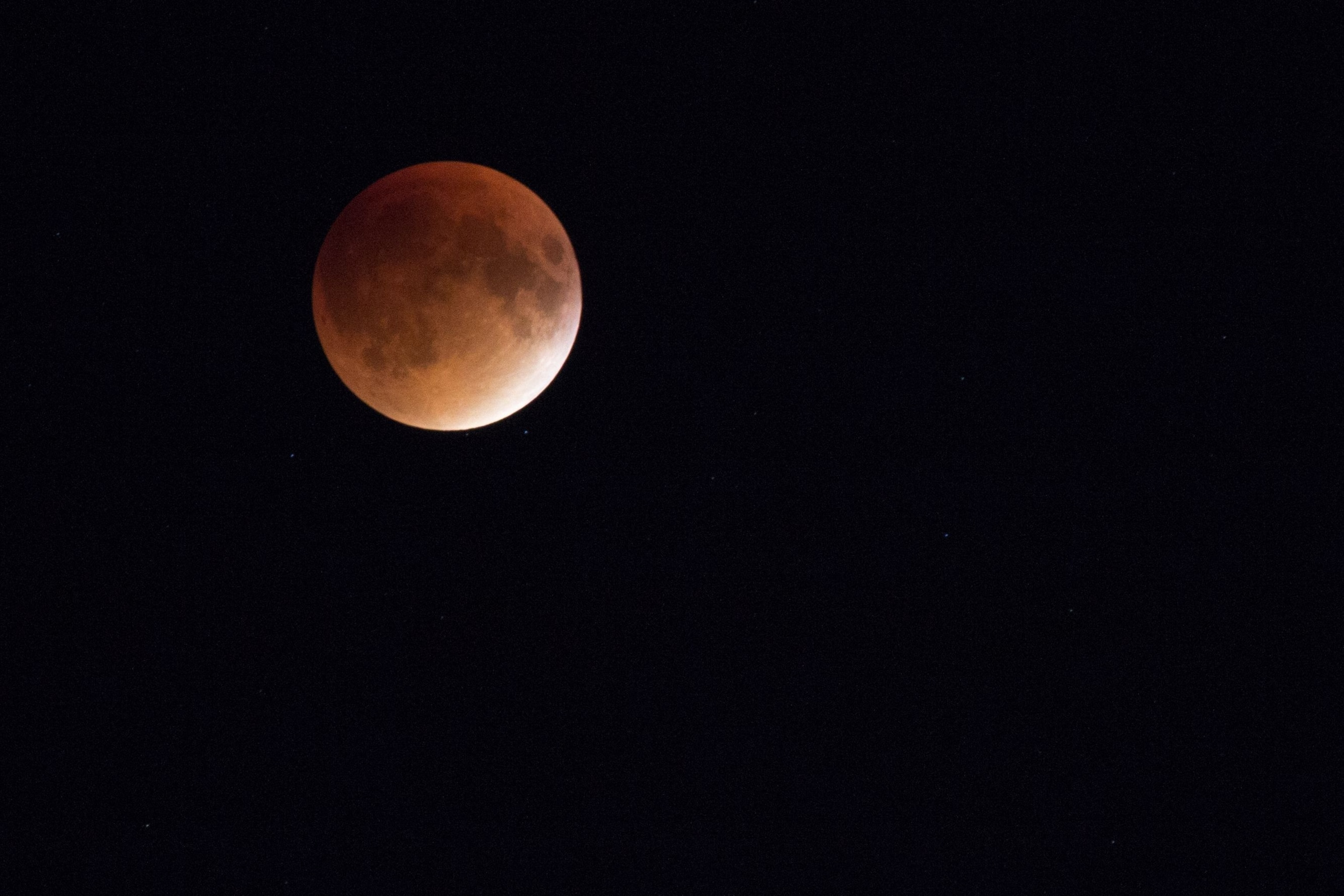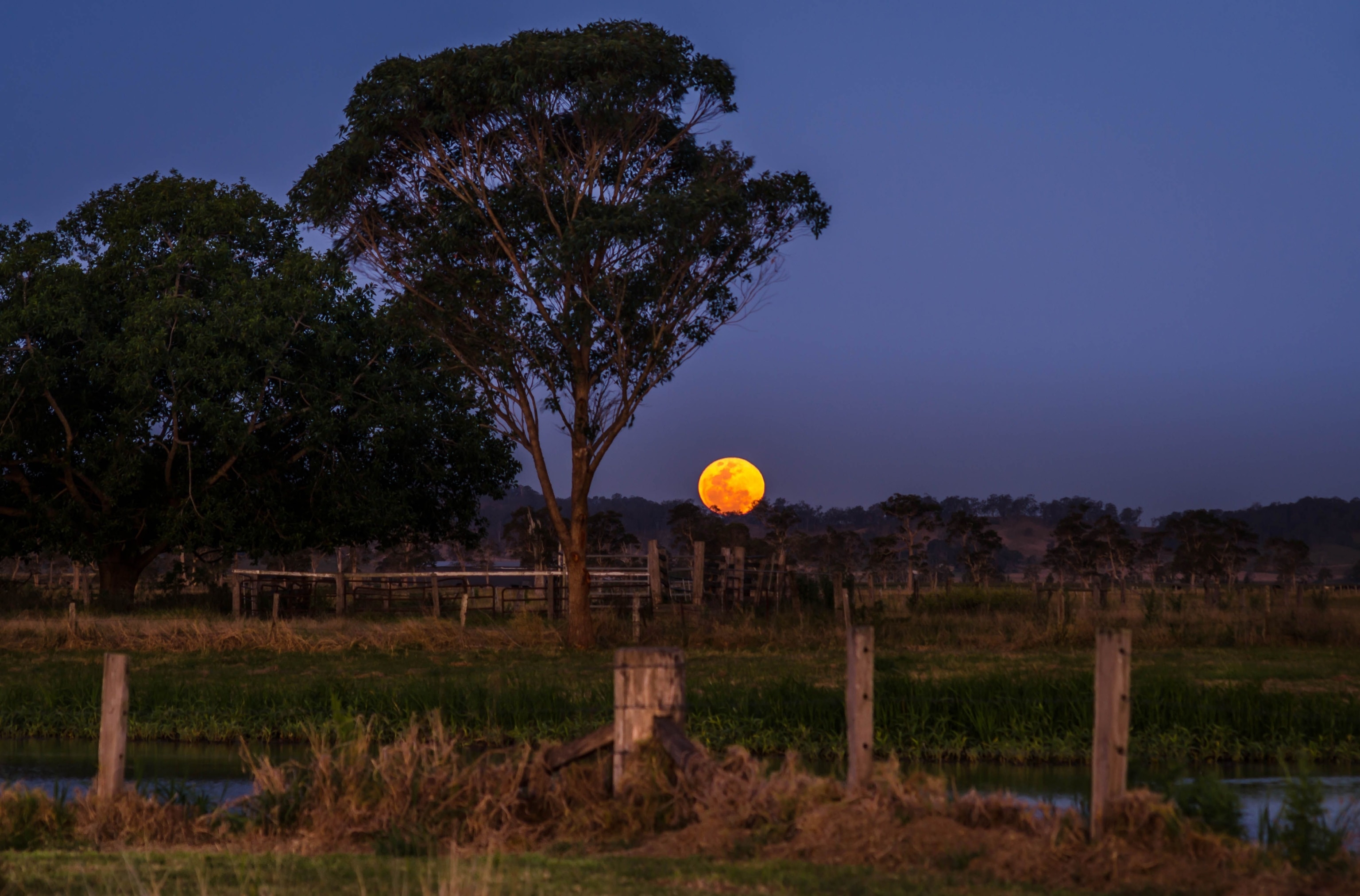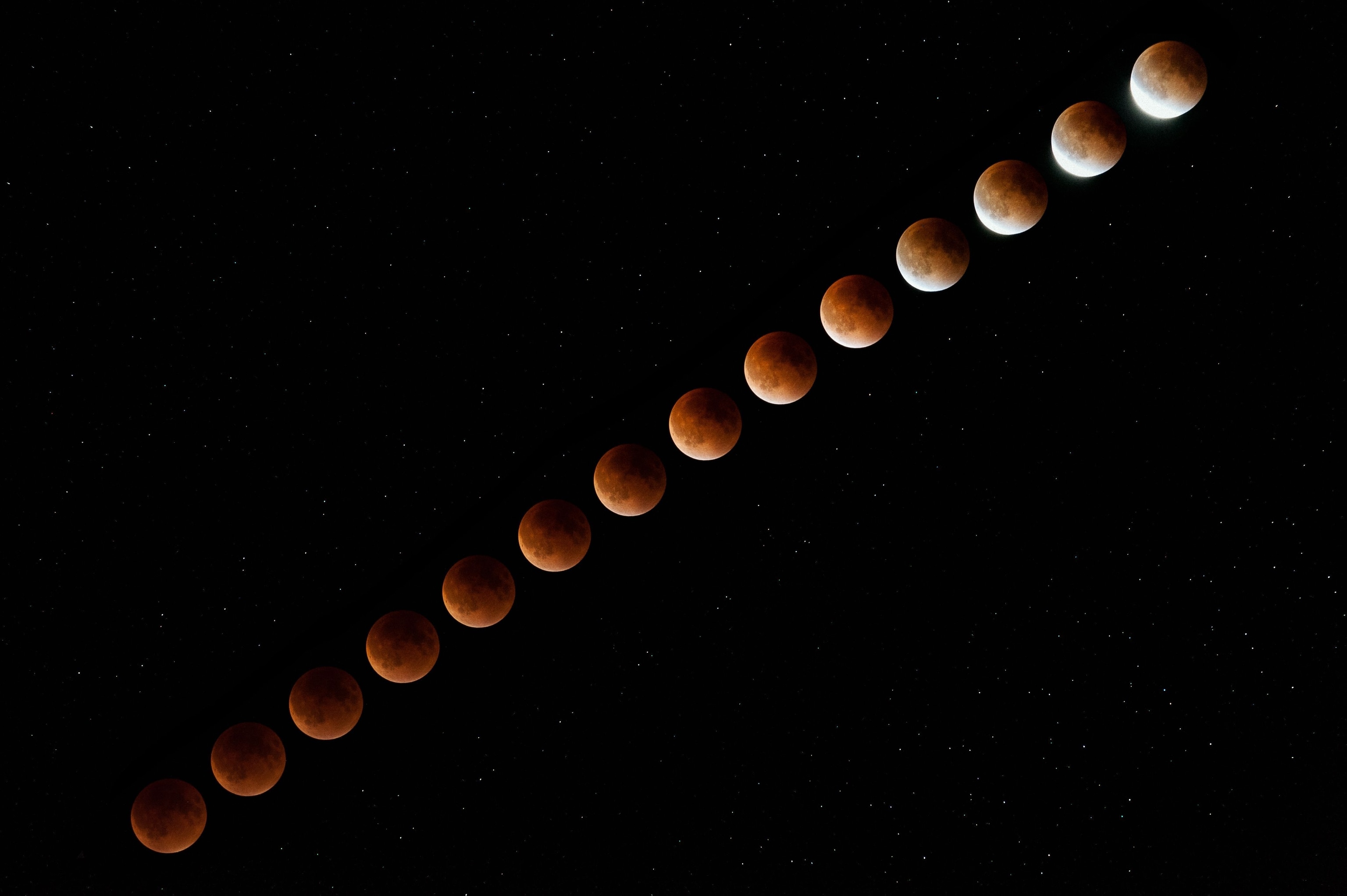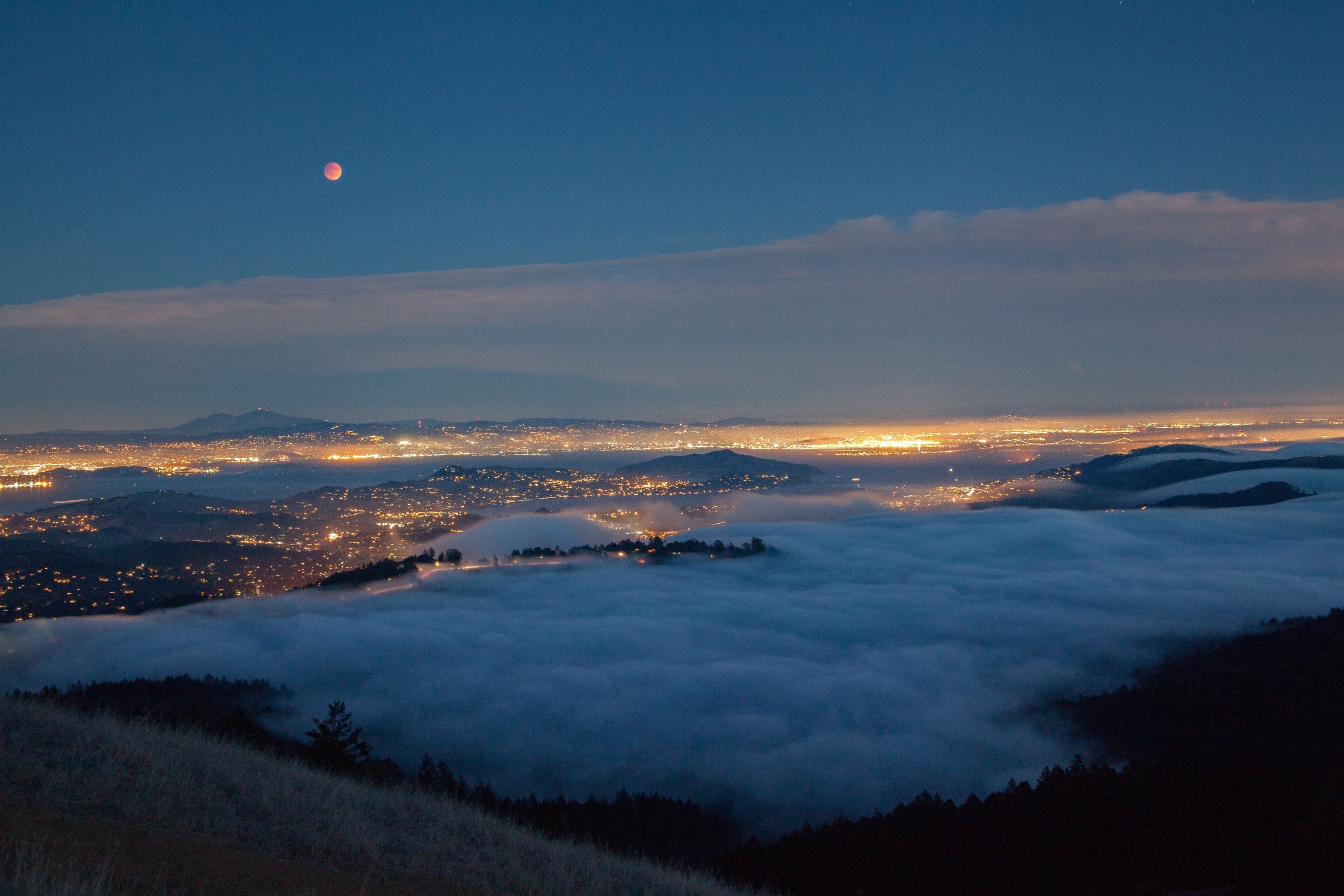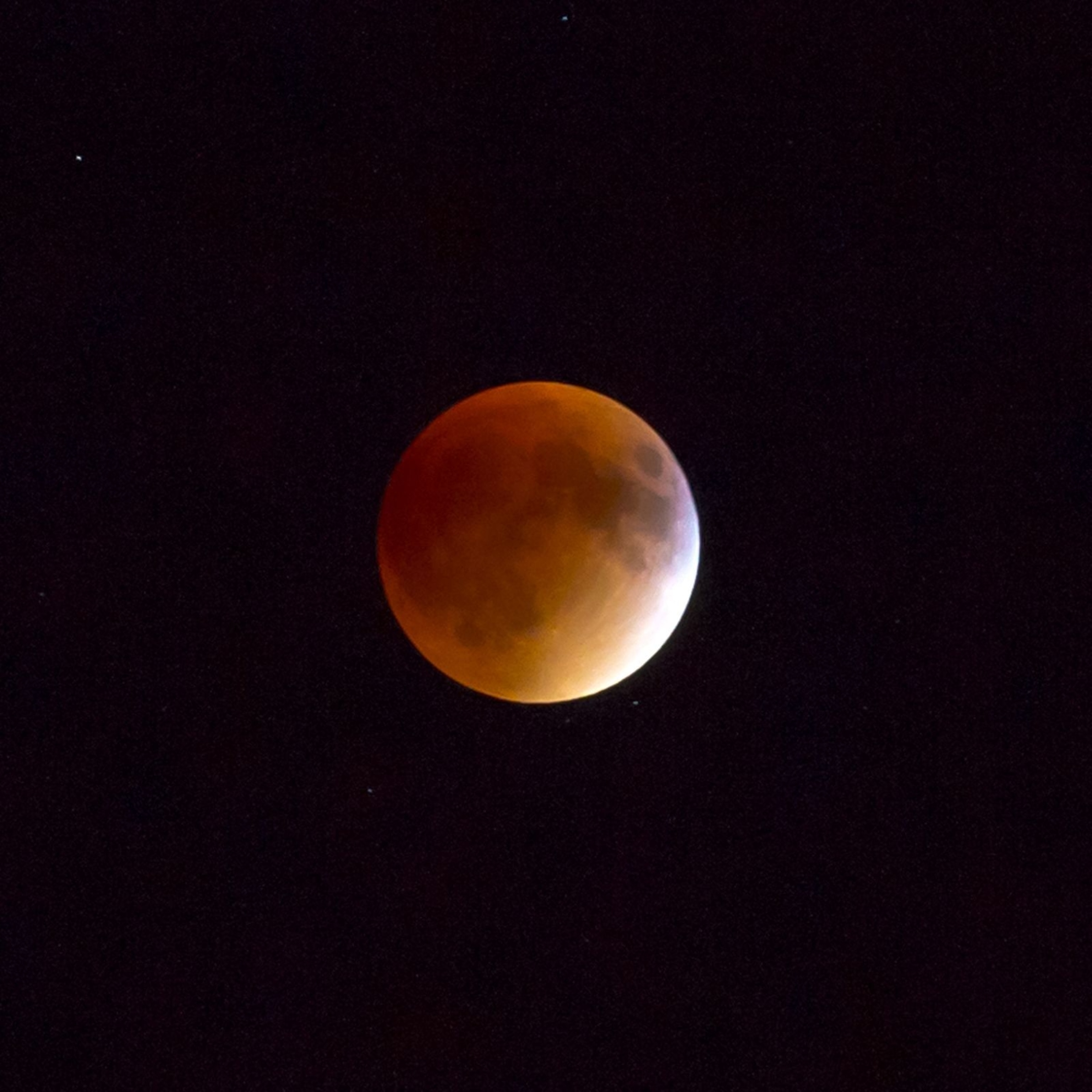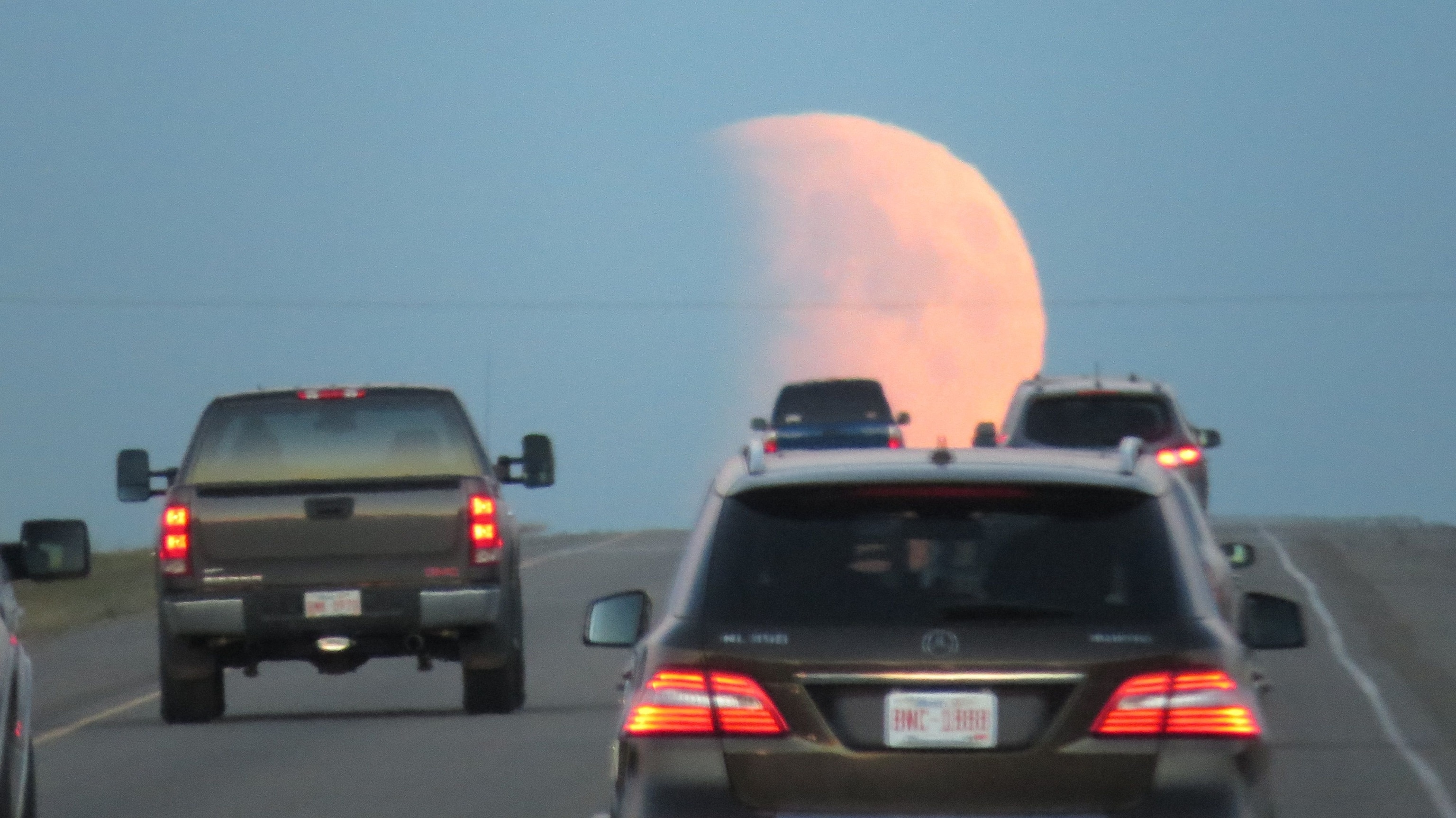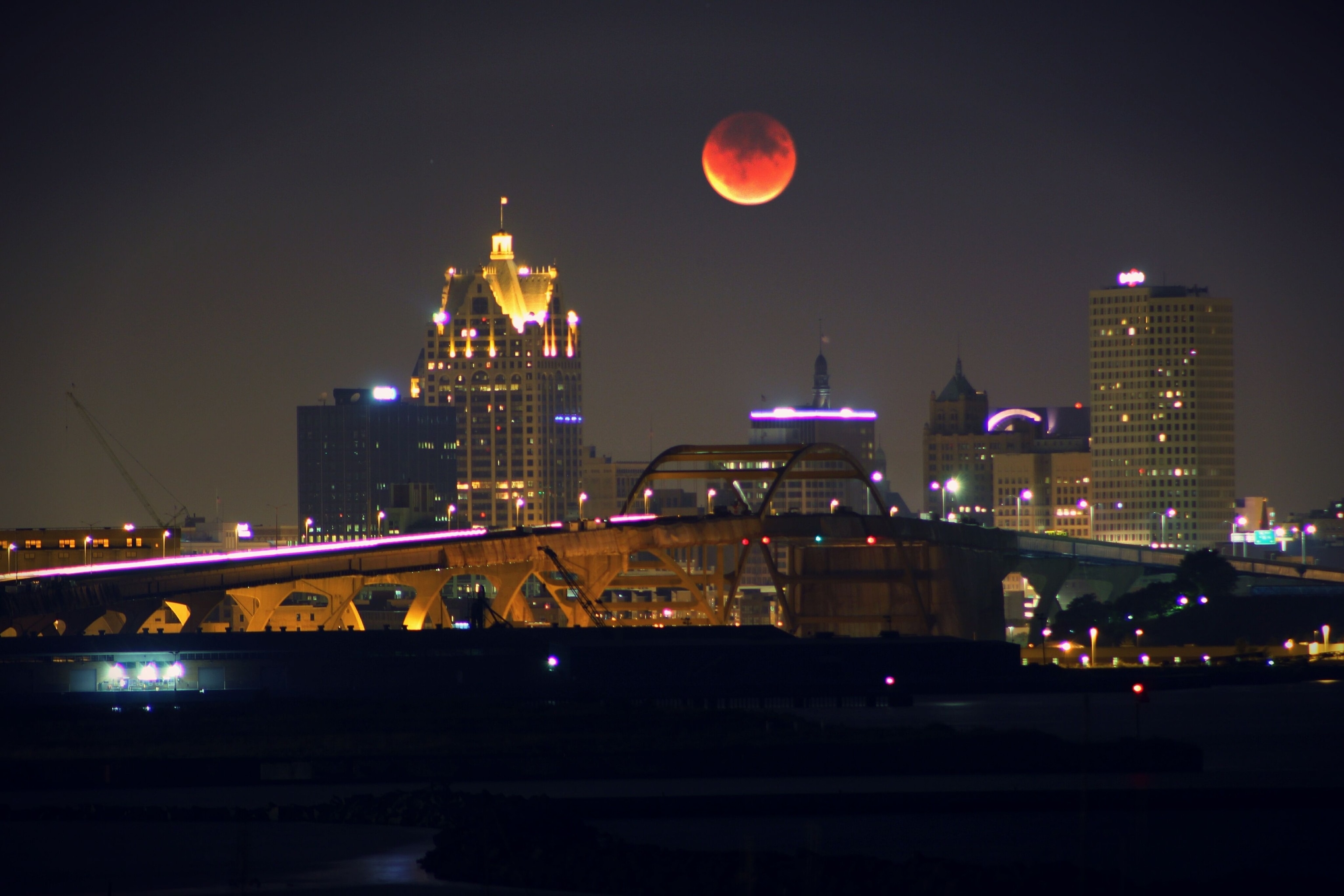Your Best Pictures of the Super Blood Moon Total Eclipse
Missed it? Want to see it again? You can, with our readers' amazing shots of this rare celestial event.
On Sunday, several lunar events combined to create a once-in-a-few-decades sight in the sky.
First, there was a full moon. Second, it was a special type known as a harvest moon, since it was the closest full moon to the autumn equinox. Third, the moon was as close to Earth as it will get all year, making it a supermoon. Fourth, there was a total lunar eclipse, in which the Earth's shadow first tints the moon red (hence the name blood moon), then hides it entirely. (Read more about this phenomenon here.)
This kind of overlap has only happened five times since 1900. The last was in 1982, and the next will be in 2033. But if you missed it, fear not. We've collected the best photos of the celestial Voltron from our Your Shot photo community.
